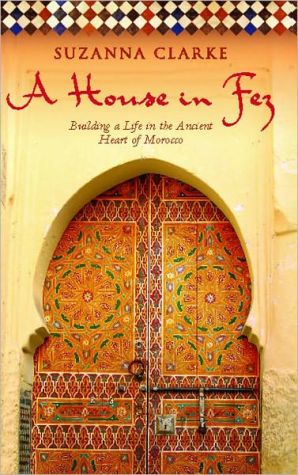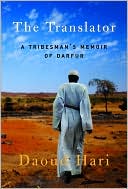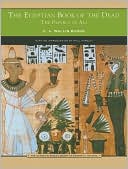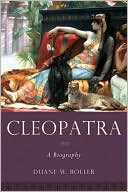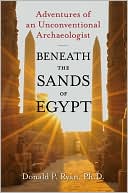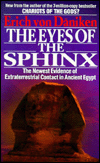House in Fez: Building a Life in the Ancient Heart of Morocco
The Medina — the Old City — of Fez is the best-preserved, medieval walled city in the world. Inside this vibrant Moroccan community, internet cafes and mobile phones coexist with a maze of donkey-trod alleyways, thousand-year-old sewer systems, and Arab-style houses, gorgeous with intricate, if often shabby, mosaic work.\ While vacationing in Morocco, Suzanna Clarke and her husband, Sandy, are inspired to buy a dilapidated, centuries-old riad in Fez with the aim of restoring it to its...
Search in google:
The Medina — the Old City — of Fez is the best-preserved, medieval walled city in the world. Inside this vibrant Moroccan community, internet cafes and mobile phones coexist with a maze of donkey-trod alleyways, thousand-year-old sewer systems, and Arab-style houses, gorgeous with intricate, if often shabby, mosaic work.While vacationing in Morocco, Suzanna Clarke and her husband, Sandy, are inspired to buy a dilapidated, centuries-old riad in Fez with the aim of restoring it to its original splendor, using only traditional craftsmen and handmade materials. So begins a remarkable adventure that is bewildering, at times hilarious, and ultimately immensely rewarding.A House in Fez chronicles their meticulous restoration, but it is also a journey into Moroccan customs and lore and a window into the lives of its people as friendships blossom. When the riad is finally returned to its former glory, Suzanna finds she has not just restored an old house, but also her soul. Publishers Weekly Beware of falling in love while on vacation. You might end up buying a riad. Less of a tourist center than Marrakesh or Tangier, Fez is the largest car-free urban area and the best-preserved medieval walled city in the world. While on vacation, Australian photojournalist Clarke and her husband were bewitched by the exotic city, deciding to return and begin a search for a riad (a large home with an inner courtyard) to renovate. This enjoyable narrative chronicles the couple's navigation through a puzzling new world. Readers get to tag along while Clarke deals with Kafkaesque bureaucracy, maneuvers delicately through relationships with neighbors, contractors and construction workers, and goes back to school to improve her French. She weaves this personal narrative together with snippets of the fascinating history and culture of her adopted country. This is an all too brief but enjoyable excursion into one woman's experience with a place she clearly loves. Readers will surely fall under its spell as well.Copyright © Reed Business Information, a division of Reed Elsevier Inc. All rights reserved.
1 \ When we mentioned our fantasy of buying a traditional Arab-style riad, or courtyard house, in Fez to a friend, he said dismissively, "What a terribly nineteenth-century thing to do."\ He had a point. For most of my life I have been enchanted by tales of early European women travelers, such as Isabelle Eberhardt and Jane Digby, who broke out of the strictures of lives far more confining than my own and found another way to live in Arab cultures. Of course, such adventures are only romantic if you ignore the fact that Eberhardt, who disguised herself as a man, contracted syphilis then drowned penniless and alone, washed away with her final manuscript.\ There were other acquaintances who, post-September 11, asked, "Why would you want to buy a house in a Muslim country? They hate us."\ This was easier to counter; we knew it simply wasn't true of Moroccans, who can be friendly and hospitable to the point of overwhelming. We were also aware that people in Western countries tend to view Muslim nations as a monolithic bloc, whereas there are many cultural differences between them, despite common elements. The present King of Morocco, Mohammed VI, has built bridges with the West and was the first Muslim ruler to express sympathy for the United States following the destruction of the World Trade Center.\ Besides, we saw our venture as an opportunity to explore Islamic culture further, and to gain a deeper insight into why the Way of the Prophet has thrived for so long.\ There was a certain inevitability about my interest in Morocco. My parents had visited the country in 1961, long before it was fashionable to do so. At that time only a handful of hardy souls, forerunners of the hippies who were later to invade, made their way down from Spain, following the sun. Enthusiastic young travelers, Meg and Henry drove their Volkswagen beetle around Morocco's few, mostly unpaved, roads, and after some hair-raising adventures ended up pitching their tent in the camping ground at Marrakesh. It appears they had a particularly convivial time there, because I was born exactly nine months later.\ Being conceived in Morocco and growing up in New Zealand, I learned to walk at a shuffle in my father's Moroccan babouches, surrounded by mementos from their visit. One of their more colorful tales was of the night they camped on the side of a road high in the Atlas Mountains. In the middle of the night, a truck came winding up from the valley below, its headlights swinging across my parents' tent. They stayed in their sleeping bags, hoping it would continue past, but when the truck drew level with their car its engine stopped.\ Rocks crunched as footsteps moved toward them. My father, deciding drastic action was called for, unzipped his sleeping bag, grabbed the tomahawk, and when he judged the moment was right, leaped out wearing only striped pajama bottoms and swinging the tomahawk above his head, bellowing a Maori haka. "Ka mate, ka mate, ka ora, ka ora, Tenei te tangata puhuruhuru..." ("It is death! It is death! It is life! It is life! This is the hairy man...")\ He must have been a terrifying sight, because four djellaba-clad men ran to their truck and sped off into the night. I wonder if those men now tell their grandchildren about the time they stopped to help the occupants of a car they thought had broken down and were confronted by a screaming madman.\ By early 2003, the idea of buying a house in Fez was sufficiently implanted for Sandy and me to start putting money aside. Forget buying a new car, clothes, or even basic house maintenance — this was our escape fund. The second part of our plan was to get ourselves back there without dipping into it.\ The previous year, we had taken holiday jobs as tour managers for a small group of well-heeled tourists in France and the United Kingdom. Now we proposed Morocco as a destination. After studying and planning for months, we flew out in October and showed our group as much of Morocco as was possible in three short weeks, with the help of a local guide. It was spring and the countryside had transformed from the dry brown of our previous trip to lush green, liberally sprinkled with poppies, irises, daisies, and other wildflowers.\ Tour leading entailed a level of luxury entirely different from what we were accustomed to, and it wasn't always for the better. Inside a four- or five-star hotel, with the exception of a few designer touches, you could be almost anywhere in the world. There was a sameness, a monotone, that irked us both, but for some of our guests such accommodation still wasn't up to par.\ "I thought there'd be hair dryers in the hotel bathrooms," one wealthy woman whined.\ Many people in Morocco don't even have running water, never mind washing machines or refrigeration, so hair dryers are not considered an essential item. But to her mind they were, and she left us in no doubt that Sandy and I were negligent for not ensuring their presence.\ We had gone to great lengths to give our clients a varied cultural experience, but it wasn't always to their taste. We arranged some of our city stays in beautiful riads, which, being several hundred years old, had rooms that were not standard sizes. Nor were the bathrooms always ideal.\ "Why can't we stay in the new part of town?" an elderly man complained. "I'm tired of all this history."\ It wasn't a sentiment Sandy and I shared. When we reached Fez we stood gazing down over the ancient walls of the Medina and the decrepit houses within, just biding their time for people with the vision, money, time, and energy to restore them. We confirmed to each other that those people should include us.\ During my internet surfing, I had come across the website of an American living in Fez who claimed that, although the Medina is the best-preserved medieval walled city in the world, its architectural heritage is under threat. Many Moroccans cannot afford to maintain the houses they live in, let alone restore them to their original splendor. If those with the means to do so, foreigners included, were to rescue some of the significant houses, this would make a big difference to the preservation of the Medina. The key point, the website argued, was the need for proper restoration, as opposed to modernization. And rather than gentrification, a healthy mix of rich and poor living together, as had always been the case in the past, was the ideal.\ One night, Sandy and I escaped from our tour group to meet the website's author, David Amster, over a drink. Originally from Chicago, David was in his mid-forties, amiable, intelligent, with a wonderfully dry sense of humor. His full-time job was director of the American Language Center in Fez, and he had called the city home for seven years. He was a passionate advocate for the traditional architecture of the Medina, about which he was extremely knowledgeable, giving lectures to visitors from the Smithsonian Institute once or twice a year. He owned five houses in Fez, one of which was a ruin. It had completely collapsed, leaving only columns and mosaics, which made it resemble a Roman temple.\ "What are you going to do with it?" Sandy asked.\ "At the moment," David said, "I have no idea. The site's under six feet of rubble. It'll take hundreds of donkey hours to move."\ But he didn't appear too concerned. "Look," he continued, pulling out of his bag a sliver of wrought iron that looked like an oversized thumb tack and passing it to me. "Isn't it beautiful? It's a handmade nail."\ This nail, several hundred years old, was to be the prototype for those David was having made. After months of searching, he had finally found a man with the necessary skills, but there was to be one small difference: the heads of the new nails would be slightly bigger, so that future experts could tell old from new.\ Sandy and I exchanged glances. This was restoration on a whole new level. It wasn't just popping down to the hardware store and getting a bag of cheap Chinese nails and a bit of two-by-four. There was obviously more to doing up a house here than we realized.\ "Would you like to see the house I live in?" David asked. "I've had a builder and his team working on it for four years."\ He didn't need to ask twice. Leaving the modern quarter, we passed under the Bab Bou Jeloud — the Blue Gate — and into the Medina, then down innumerable dark alleys populated by cats who blinked at us, or slunk away on our approach. In the moonlight, one alley looked much like another and I was amazed at David's unerring sense of direction. We finally arrived at a large doorway, and as he ushered us in the first thing I noticed was the strong, fragrant smell of freshly sanded cedarwood.\ We were standing in a dimly lit courtyard with an atrium stretching high above. All around was a wealth of decoration: blue, green, and white tilework — or zellij — intricate plaster and wood carving, and two enormous cedar doors. It was like a jewel box, its beauty so overwhelming it was hard to imagine living in such a palace.\ In contrast, the furniture was surprisingly Spartan: a bed, a single chair, nowhere to cook as yet. But who needs possessions and comforts when you wake up every day to such splendor? We had never envisioned anything like this. The prospect of restoring such a house was at once daunting and thrilling.\ A few days later, I farewelled Sandy and the tour party at Casablanca airport. Sandy had to return to Australia for work, but I caught the train back to Fez, with the intention of finding us a house. Copyright © 2007 by Suzanna Clarke
\ Publishers WeeklyBeware of falling in love while on vacation. You might end up buying a riad. Less of a tourist center than Marrakesh or Tangier, Fez is the largest car-free urban area and the best-preserved medieval walled city in the world. While on vacation, Australian photojournalist Clarke and her husband were bewitched by the exotic city, deciding to return and begin a search for a riad (a large home with an inner courtyard) to renovate. This enjoyable narrative chronicles the couple's navigation through a puzzling new world. Readers get to tag along while Clarke deals with Kafkaesque bureaucracy, maneuvers delicately through relationships with neighbors, contractors and construction workers, and goes back to school to improve her French. She weaves this personal narrative together with snippets of the fascinating history and culture of her adopted country. This is an all too brief but enjoyable excursion into one woman's experience with a place she clearly loves. Readers will surely fall under its spell as well.\ Copyright © Reed Business Information, a division of Reed Elsevier Inc. All rights reserved.\ \
